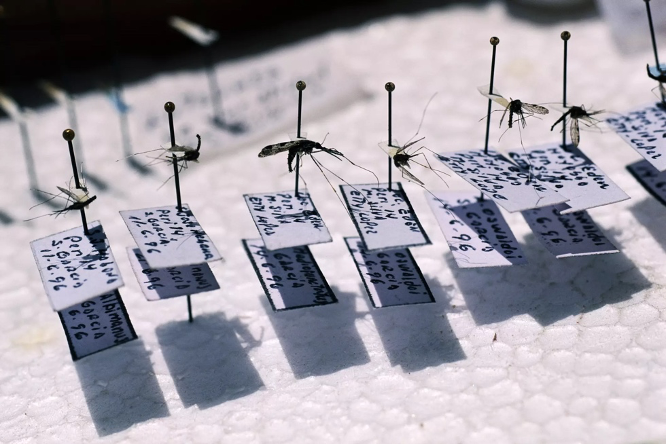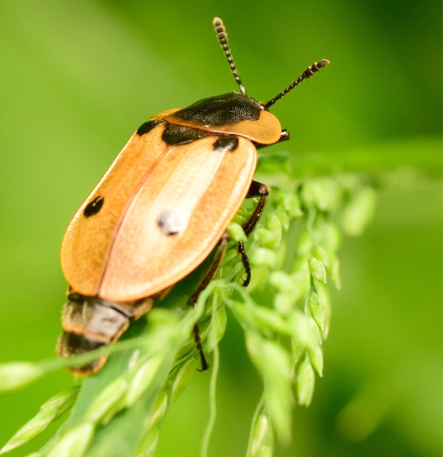|
Last month on the Bug Lessons blog, we took a deeper dive into the specific components of IPM. This month in our IPM series, we’re taking a closer look at the pest identification process and action guideline setting for your program. These introductory steps are crucial in designing an effective pest management program—read on to make sure you’re executing these critical steps correctly! Pest IdentificationIf you recall, in our first couple of blogs, we emphasized that it is critical to properly identify the pest in question before engaging in any sort of pest management strategy. Treating for the wrong pest can cause failure of an IPM program because a successful program hinges on understanding pest biology and behavior. Here are some helpful tips and resources that will have you feeling like an entomologist in no time!
 We’re borrowing this from our first IPM blog because it’s important! Getting the correct insect identification is crucial for effective pest management. Diagnostic entomologists and taxonomists specialize in the identification and classification of insects. If you need assistance identifying a specimen, contact an extension entomologist or utilize the online bug guides we referenced in this blog! (Image Credit: Chris Martin, Image Source: Getty Images) Once you have all of this information, there are a few ways to proceed. If you think you can identify the insect yourself but need a little help/confirmation—there are some great online databases that can help. For instance, BugFinder allows users to start an ID based on the silhouette of the pest in question. Another helpful website is BugGuide.net, which even has an option for registered users to make identification requests. Community members on the website are often more than happy to chime in with assistance! If you prefer to have someone else make the identification for you, reach out to an extension specialist and entomologist employed at a land-grant university. The USDA has a handy list to help you find the university closest to you. Department webpages often list the extension faculty for the public to access. You can also reach out to cooperative extension offices, where an extension agent might be able to assist. Please remember that entomologists are NOT trained medical doctors or dermatologists. Rashes/bites/tissue samples, etc., are not the way entomologists identify insects and they will not make pest identifications based on suspected bite reactions. If you suspect you are dealing with a pest that is causing bite marks, allergic reactions, and other maladies and you cannot obtain a physical sample of the pest, seek help from a medical doctor before consulting entomologists.  When you find a potential pest, record everything you can remember about where and when you found it. What does it look like? What was it doing? What kind of antennae did it have—beaded, like this bug here? Or were they fluffy in appearance? Elbowed, straight? The more details you have, the better a diagnostician can assist you. (Image Credit: Nicolas Brulois, Image Source: Unsplash) Setting Guidelines For ActionOnce you understand what pest is present, how many you can tolerate should be the next question to address. This number will often hinge on a number of factors, such as cost of treatment, environment where pests are present, personal preferences, potential damage the pest can cause—to name a few. However, establishment of an “end goal” so to speak will prevent potentially unnecessary labor and pesticide applications. The ‘action threshold’ is the point at which pest populations are a level that require intervention. It is a difficult metric to assess. It is certainly more subjective than identifying a pest. In urban pest management, specifically, the action threshold is often set from scratch on a case-by-case basis. For instance, one individual may have a much higher tolerance for the presence of wolf spiders versus another individual. When the pest poses a public health threat, like bed bugs or German cockroaches, the threshold required for action is probably as low as the presence of one bug. The action threshold can be set by the individual who is affected, and is a personal choice. If you are having trouble discerning whether or not you should take action against a pest, you can reach out to extension folks with this question, too! ConclusionsIntegrated pest management is a very effective way to manage pests, but the process can seem daunting. We hope that by breaking it down piece by piece in this series makes it more straightforward! It is important to remember that your first IPM plan may not go…to plan! Make sure to give yourself flexibility. For instance, maybe you initially think the presence of five ants is no big deal, so you take no action. However, the next day, 30 more workers show up on your counter and your action threshold changes- perhaps five ants would have been a more appropriate action threshold after all. That’s okay! However, if you need more help with these steps of your IPM plan, feel free to contact us at Bug Lessons, or, contact your local extension specialist.
0 Comments
Your comment will be posted after it is approved.
Leave a Reply. |
Bug Lessons BlogWelcome science communicators and bug nerds!
Interested in being a guest blogger?
Archives
November 2023
Categories
All
|